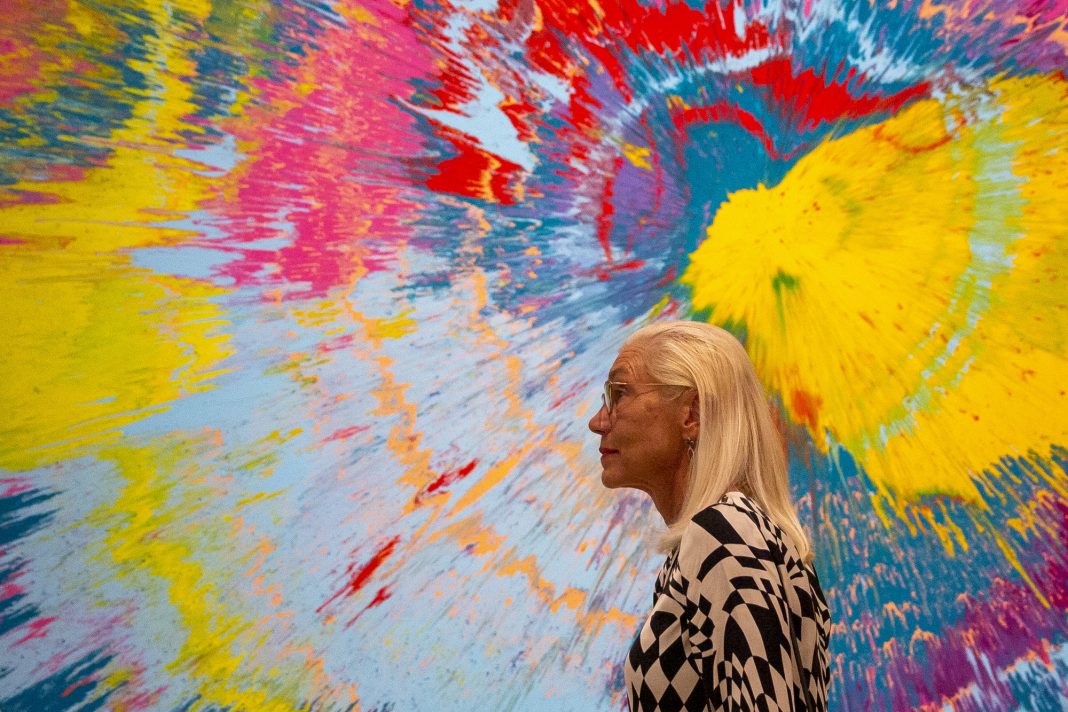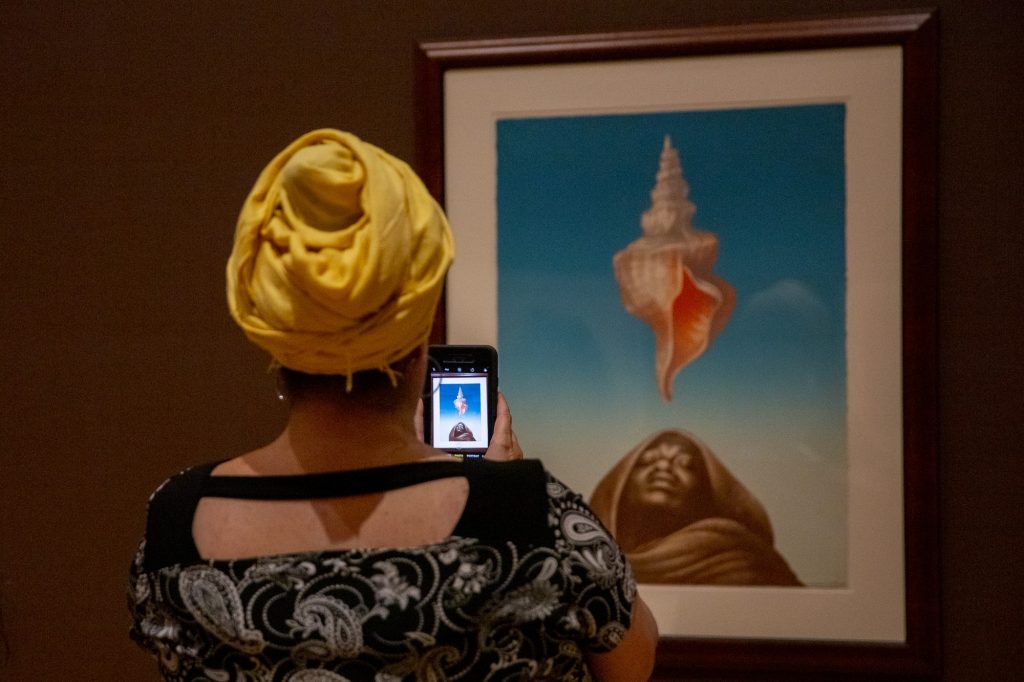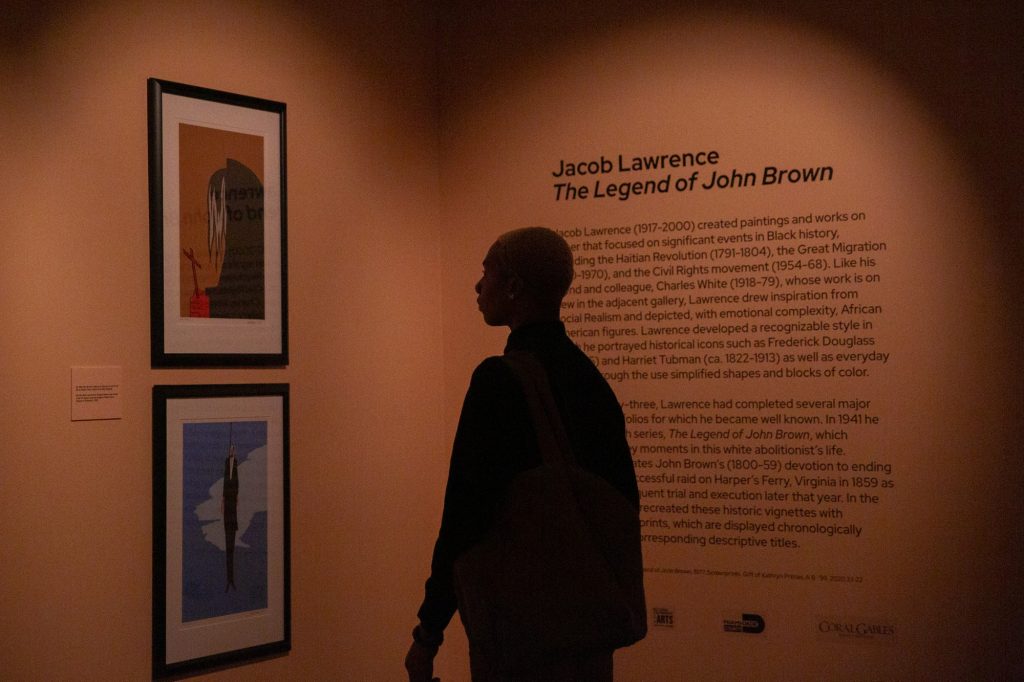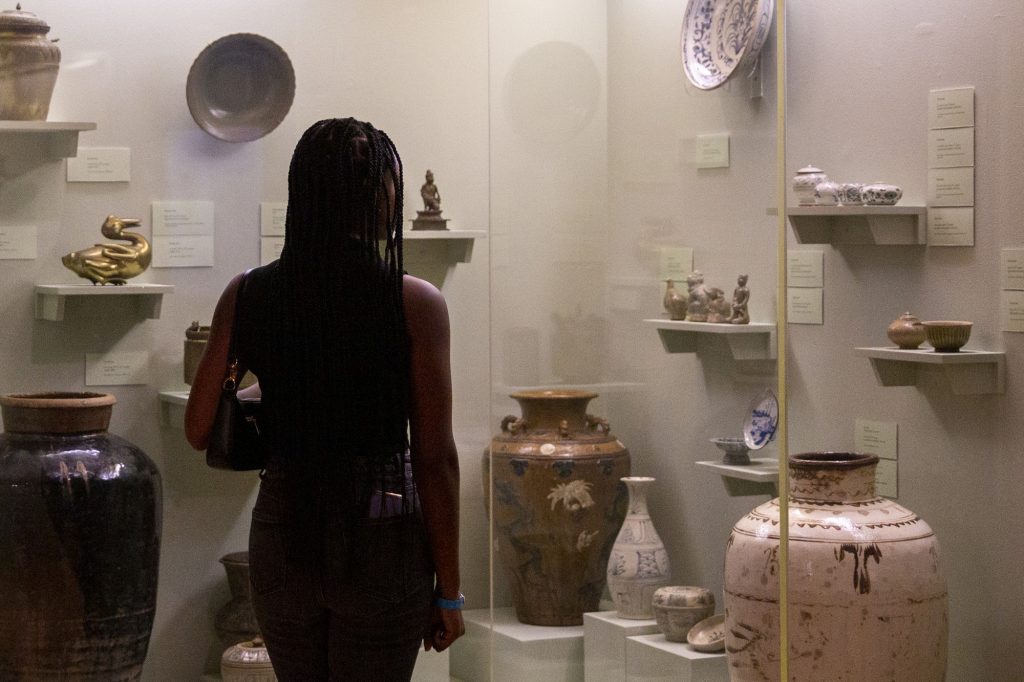
On Thursday Feb. 23, the Lowe Art Museum hosted an After Hours event celebrating the life and work of famed Civil Rights era artist, Charles White. Generously loaned to the museum by collector Arthur Primas — whose daughter Kathryn Primas is a UM alumna — White’s works highlight the importance of Black dignity and humanity during the Civil Rights era.
The collection featured some of White’s most important works, including “J’accuse #6” (1966) and “Cat’s Cradle” (1972). Beaux Arts Director and Chief Curator Jill Deupi explained that these works not only visually depict the Black experience, but also contain hidden meaning and inferences.
“For me, Charles White is the embodiment of grace,” Deupi said.
White was a life-long advocate for Black people, but never lost hope in humanity.
“J’accuse #6” portrays Harry Belafonte, a musician and entertainer during the Civil Rights era who, like White, used his art as a medium for political activism. This work, along with several others originally displayed in 1966 at the Heritage Gallery in L.A., were renamed “J’accuse” in reference to the French Dreyfus Affair of 1894.

In 1894, the French government wrongly convicted Jewish military officer Alfred Dreyfus of treason, then sentenced him to life imprisonment on Devil’s Island off the coast of French Guianna. This prison was known as one of the most inhumane punishments at the time, eventually shut down in 1953.
Dreyfus was released from Devil’s Island in 1899, after famed writer Émile Zola wrote a letter to the French president entitled “J’accuse” (”I accuse you”), in which he condemned the president and entire government for anti-semitism.
By renaming his works “J’accuse,” Charles White drew a thought-provoking comparison between the centuries-long struggles of Jewish people across the globe and Black people in the US.
This comparison demonstrates White’s passion for calling attention to both the day-to-day discrimination faced by African-Americans and systemic racism within the government.
“Cat’s Cradle” depicts more of the personal, everyday challenges of being Black before and during the Civil Rights Movement.

The subject of the work, a young boy, stares directly into the eyes of the viewer. His eyes convey a range of emotions from disheartenment, exhaustion, determination and hope. Entangled by a cat’s cradle string held by an unknown entity, the boy rests against a wall.
This work is laden with themes of an omnipotent puppeteer, despair in the face of a stacked social system and hope in the future.
“Cat’s Cradle” represents White’s “lifelong belief he had in the importance of children because they are the literal manifestation of hope and the future,” Deupi said.
More of Charles White’s works are on display at Hampton Art Lovers at the Historic Wards Rooming House. Although the Charles White exhibit at the Lowe closed on Feb. 26, you can still appreciate his work here in Miami.
Chris Norwood, the gallerist at Hampton Art Lovers, explained that White’s work is a narrative with emphasis on humanity and dignity and an important piece of the puzzle of Black history.
“I thought it was really interesting how his art represented different interpretations of the Black experience,” Jaida Headley, a junior public relations major and exhibit attendee, said.

She went on to explain how she could sense the feeling in his work, appreciating that his art captures the essence of the Civil Rights era through emotion rather than simply being a straightforward recount of historical events.
Before the pandemic, the Lowe Museum hosted After Hours events almost every month with upwards of 300 attendees. While these large gatherings were suspended in 2020, the museum intends to regularly host After Hours again, starting with one or two per semester before returning to monthly events.
The Lowe hopes to provide students and community members with ample opportunity to experience art. The After Hours series, with its snacks, drinks, music and good conversation, is a perfect chance to become better acquainted with the museum and all it has to offer.
The next Lowe exhibition, called “Transcendent Clay Kondo: A Century of Japanese Ceramic Art,” opens March 23.






